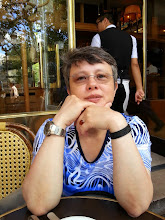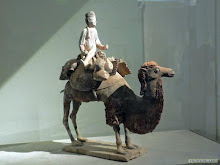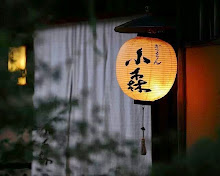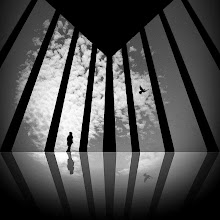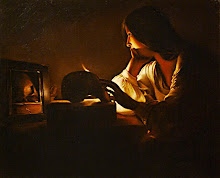Piazza d'Italia, 1961, Giorgio de Chirico, huile sur toile 40 x 50.5 cm. Collection de Derek Power, Londres
«Qui peut nier le rapport troublant qui existe entre la perspective et la métaphysique? » se demandait de Chirico. « Piazza d'Italia », 1961. Place d'Italie, Turin? Île de Naxos, Grèce? Place du rêve, paysage métaphysique? La toile peinte en 1961, appartient à la troisième période du peintre, celle qualifiée de néo- métaphysique, de 1940 à sa mort en 1978. « Piazza d'Italia », 1961. Mais la date compte si peu, surtout s'agissant de Giorgio de Chirico, si prompt à jouer avec sa propre légende. Place d'Italie, probablement Turin, la ville fétiche de de Chirico, celle où il a reçu la révélation de son destin de créateur. Turin, la ville des rêveries Nietzschéennes, celle aussi où le philosophe allemand sombrera dans la folie, en 1888. Entre Turin et Naxos, entre l'Italie et la Grèce; à la fois émergeant de la mémoire du peintre et rêvée, un espace unique, reconstruit, tour à tour insaisissable et éternel. Un entre-deux, une déchirure dans le tissu du temps. Ariane, ma sœur*... On a beaucoup écrit sur la peinture de Giorgio de Chirico, mais finalement assez peu sur la série des Piazza d'Italia, qui représente pourtant une bonne centaine de toiles. Pourquoi cela? Est-ce par qu'elles semblent désertées par l'histoire, accessibles uniquement sous les auspices du rêve? C'est qu'à bien y regarder, « Piazza d'Italia », 1961, tient un peu du miracle. À la fois dans le réel et le réfutant, allégorie du passé glorieux de l'Italie – via son architecture – et méditation sur le mystère de notre existence. Tout tient, mais tout vacille. L'ici et l'ailleurs. Voir, voir, jusqu'à l'aveuglement. Voir?
Et que voyons-nous, en regardant attentivement « Piazza d'Italia », 1961? D'abord, le décor. Une scène de ville presque déserte, si ce n'est pour la présence de deux hommes, à gauche du tableau. De chaque côté de la toile, un bâtiment aux arcades romaines. Le bâtiment de gauche a des fenêtres aux volets clos, comme pour indiquer qu'il est habité, tandis que celui de droite semble posé là, seulement comme contre-point plastique à celui de gauche. Zoom avant. Pas d'entrée visible dans le corps du bâtiment, des fenêtres ne donnant sur rien, et sur la droite un bloc de pierre, plus repoussoir visuel qu'élément de scénographie. Nous voilà prévenus, on n'entre pas dans le monde de de Chirico. Regarder, oui. Entrer, non. Au centre de la toile, la statue d'Ariane, dans l'éclairage cru de cette fin d'après-midi. Au fond, barrant le paysage, une tour. La tour, le môle d'Antonelli est un monument célèbre culminant à 167, 5 mètres et qui se trouve à Turin. Derrière un train à vapeur, et enfin la montagne. Revenons sur les éléments du décor. D'abord, les arcades. Pourquoi cette prédilection pour l'architecture? Pour de Chirico, l'arcade romaine traduit parfaitement son obsession du mesurable.
Ses toiles fourmillent d'instruments de mesure: équerre, compas, règle, té, etc. C'est une référence picturale à la Renaissance, aux théoriciens et aux peintres – d'Alberti à Brunelleschi, en passant par Piero della Francesca - qui ont posé les bases du langage plastique occidental. Le môle d'Antonelli, que l'on retrouve dans nombre des Places d'Italie du peintre, est un double hommage à Turin. C'est à Turin que de Chirico va découvrir son style. C'est également la ville où le peintre prend conscience de l'influence bénéfique de l'architecture sur ses sens. Pour Giorgio de Chirico qui souffre de crises de mélancolie profonde, mais aussi de coliques violentes, Turin offre le refuge de sa géométrie parfaite et de son atmosphère radieuse. Ordre et linéarité. Et puis, il y a la lumière de la ville. Son ciel extrêmement clair, ses heures lentes qui semblent guidées par une force mystérieuse. Peut-être, la force du destin? Ariane, ma sœur, de quel amour blessée...

Voir, mais plus loin. Lorsqu'on regarde une toile de de Chirico, ce qui frappe avant tout c'est l'aspect théâtral. Il y a un élément de fixité plastique évident. La forme est une traduction de l'obsession du géomètre, tandis que la lumière est une cristallisation, le réceptacle visuel de la stimmung* moderne. Toutes les Places d'Italie reposent sur un même principe de tension visuelle et plastique. Les couleurs sont stridentes, l'image statique, tandis que l'architecture devient sous le pinceau de de Chirico, une cristallisation mathématique du visible. Dans « Piazza d'Italia », le visible pourtant, n'obéit pas à la logique. La fumée s'échappant de la locomotive ne correspond pas au sens du vent, indiqué par les fanions flottant au sommet du môle d'Antonelli. L'échelle n'est pas respectée entre le môle et les bâtiments. Alors, où chercher la logique? Que représentent ces cités désertées? « Il ne faut jamais oublier qu'un tableau doit toujours être le reflet d'une sensation profonde et que profond veut dire étrange et qu'étrange veut dire peu commun ou tout à fait inconnu », déclara un jour de Chirico. Et Ariane, quel rôle joue t-elle dans l'univers chiriquien? Pour le peintre, natif de Grèce et grand amateur de Nietzsche, la figure d'Ariane incarne le principe féminin de l'art. Dans « Piazza d'Italia », la statue d'Ariane, placée au centre de la composition remplace la figure vue de dos des peintres romantiques. Ariane ne fuit pas son destin, elle y consent. Comment? À mi-chemin entre l'ombre et la lumière, entre le connu et l'inconnu, le savoir et le pressentir, le chaos et l'éternité, il y a la figure mélancolique et pensive d'Ariane. C'est elle qui articule la toile, c'est autour de sa statue que sont distribués les éléments de la composition. Dans l'univers chiriquien, comme dans celui de Nietzsche, Ariane est la force du destin qui s'accomplit, avec tout son poids d'ombre et d'égarements.
Je suis ton labyrinthe, nous dit Ariane. Dans « Piazza d'Italia », la ville devient un espace médiumnique, où le silence se fait oppressant, comme pour mieux annoncer l'orage inévitable. Les arcades romaines ne conduisent plus l'oeil vers l'infini, un au-delà du monde. L'omniprésence de l'architecture démultipliée par le découpage des ombres, accentue l'effet de révélation imminente. Sur la « Piazza d'Italia », le temps s'est arrêté, suspendu au-dessus de l'abîme du regard. C'est l'instant de l'éternel retour, de la perception extrême de notre présence au monde. Une présence si intense, un mystère si entier. L'architecture y découpe l'éternité en instants isolés. L'éternité par intermittence. Le monde, sous le pinceau de de Chirico, se fait présage. Tout est signe. Place d'Italie, cinq heures du soir. Quelque chose a eu lieu. Ariane, ma sœur, de quel amour blessée, vous mourûtes un jour aux bords où vous fûtes laissée...
*Phèdre, Jean Racine, Acte I, scène 3 (1er paragraphe)
* Consonance spirituelle, concept allemand élaboré au 18ème siècle (3ème paragraphe)








